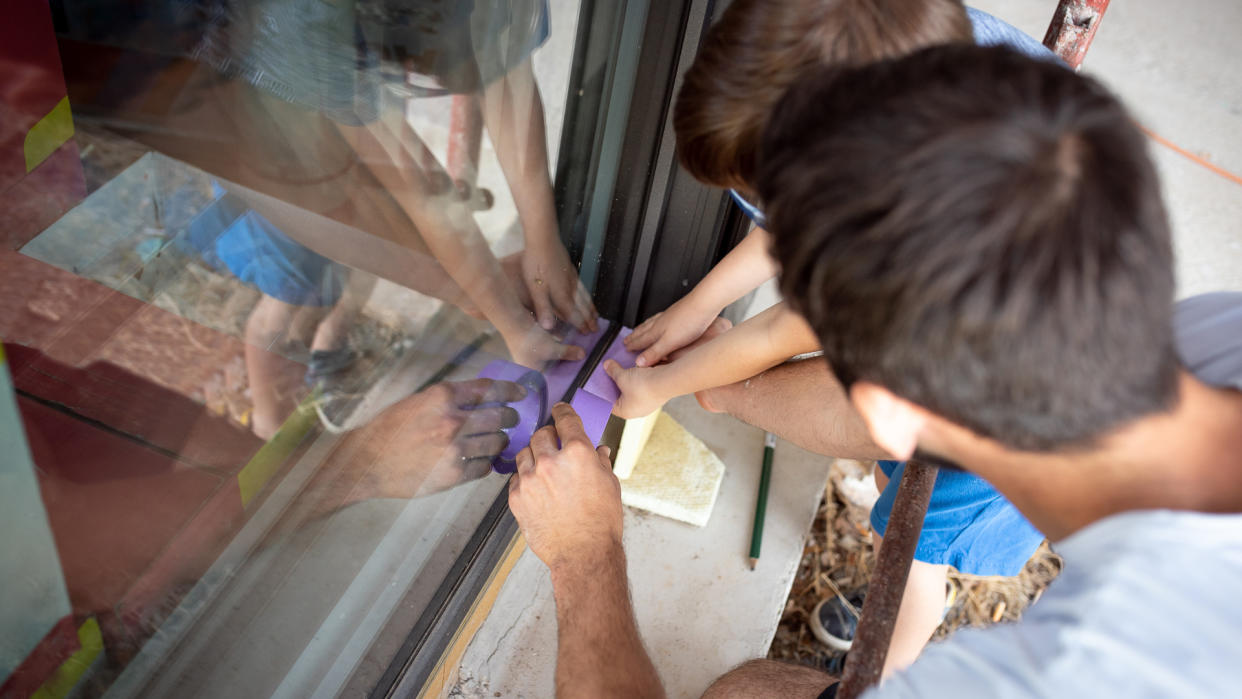10 Affordable DIY Winterization Projects

When you’re still in the throes of summer, it can be hard to even think ahead to the cold months of winter, but planning ahead is vital to saving money. Winterizing your home helps you to keep heat in, prevent leaks of both water and cold air, and hopefully keeps your energy bill at a reasonable level.
Save More: Back-to-School Tips To Help You Cut Costs
Be Aware: This Credit Score Mistake Could Be Costing Millions of Americans
You don’t need to hire a contractor to do these 10 affordable DIY winterization projects.
Seal Your Doors
Steve Elliott, franchise owner of Restoration1, pointed out that the area around outside doors is one of the largest causes of air leaks in homes. “Close the door and rub your palm down the edges where it meets the door frame. If you sense chilly air entering through your door, you must increase insulation,” he said.
Fortunately, repairing air leaks in your doors is one of the least expensive winterization measures you can take. For most doors, you can purchase foam weather seal strips at your local home improvement store, in a variety of sizes. Elliott advises you first clean the door frame where the weather stripping will be installed, then cut the foam into the required lengths.
It’s as simple as putting on a Band-Aid after that: position the weatherstripping against the door frame, and slowly remove the protective film before pressing the sticky side against the door frame.
Insulate Your Water Heater
A quick and easy winterization project to take on is insulating the tank for your water heater, said Melanie Hartmann, owner of Creo Home Buyers in Baltimore, which rehabs property in Maryland to resell and rent.
“A simple insulating wrap can be purchased from any home improvement store and it takes just a few minutes to install. The wrap means less energy used to maintain the desired temperature, saving on energy costs, especially when the heater is located in a chilly basement.”
Take Our Poll: What’s the Table Time Limit on a $400 Restaurant Meal?
Replace Furnace Filter and Humidifier Pad
Bill Samuel, a licensed general contractor and residential real estate developer with Blue Ladder Development, recommended you install a fresh furnace filter before the start of the winter.
“While you are replacing the filter, spend a minute or so looking around the furnace to make sure you don’t hear any strange noises, see any leaks, or any lights flashing that may indicate a problem. You’ll want to be sure the system is in optimal condition before heading into the winter,” he said.
Additionally, Samuel suggested you replace a fresh humidifier pad if you have one installed on your furnace. “After you have installed the new pad you’ll want to adjust the knob from off to about 40-50% humidity.”
Fix Roof Shingles
Datha Santomieri, co-founder and vice president of national insurance agency Steadily, urged homeowners to look for and replace cracked, missing or damaged shingles to avoid roof leaks.
“Falling tree limbs, strong winds, and sun weathering can all lead to damaged shingles. While you’re on your roof cleaning out your gutters, you might as well check on the conditions of your shingles as well. Doing so is a cheap but pivotal way to winterize your home in preparation for cold weather.”
Check Gutters and Downspouts
Make sure your gutters and downspouts are clear to prevent water damage to your roof, said Marty Ford, president of BulletpRoof Roof Systems Ltd. “If your gutters are full of leaves and other debris, the water can back up and cause damage to your roof.”
Trim Trees and Shrubs
You should trim trees and shrubs near your home regularly, Ford said. Overhanging branches can damage your roof in high winds.
Cover Pipe Fittings
Also, Ford recommends covering any exposed pipe fittings. “Pipe fittings are often located on the roof, and they can be vulnerable to freezing in cold weather. So, make sure to cover them with an insulating material like foam or tape.”
Add Insulation to Your Attic
Few people know that one of the cheapest ways to winterize your home is by making sure your attic won’t let heated air from your house escape, affecting your energy costs in the process, said Stefan Bucur, founder and co-owner of Rhythm of the Home with his wife.
“A fast and reliable DIY project is adding insulation panels between the wooden eaves of your roof. You can find fiberglass panels at most hardware stores…and all you have to do is add them under your roof. For smaller cracks you can caulk all the crevices that might let out heat. Even with only one extra layer of insulation, you can make a considerable difference in winterizing your attic.”
Seal Window Gaps
Myrtle Marie, a DIY expert with DIYWithMyGuy, said you can save money on your energy bill with a couple of key steps.
“One of the best and most affordable ways is by sealing off any cracks or gaps near windows or doors for insulation purposes. You can also apply weatherstripping to those areas as well as new caulking around windows and doors that have gaps. We have also found success in using window insulation kits.”
Ford added that you can also get a pair of reliable insulated curtains for less than $90.
Clear Sidewalks
Finally, it’s also important to take preventative measures to clear sidewalks. This includes properly pre-treating areas before a storm and removing snow to help keep your home’s sidewalks clear of ice and snow build-up, which can help prevent slips and falls.
More From GOBankingRates
Zelle Facebook Marketplace Scam: How To Recognize and Avoid This Scam
Looking To Diversify in a Bear Market? Consider These Alternative Investments
This article originally appeared on GOBankingRates.com: 10 Affordable DIY Winterization Projects
